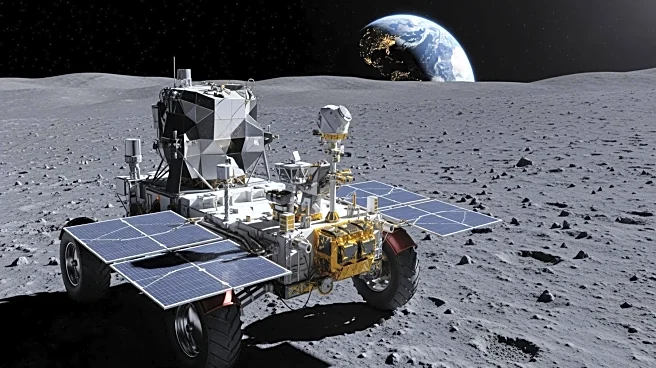What's Happening?
Jim Bridenstine, former NASA administrator, expressed concerns about the United States' current strategy in the race to return to the Moon, particularly in comparison to China's advancements. Speaking
at Payload's Lunar and Mars Economy Summit, Bridenstine highlighted a misalignment between political rhetoric and actual deliverables from contractors. He emphasized the need for a coherent architecture to effectively compete with China, which has been making significant strides in lunar exploration. Bridenstine noted that the U.S. Department of Defense is expected to increase spending on lunar remote sensing capabilities, which he believes is necessary to regain competitive ground. The Artemis program, aimed at returning humans to the Moon, faces challenges such as technological development, in-space refueling, and human flight qualification, which require substantial investment and effort.
Why It's Important?
The U.S. strategy in the lunar race has broader implications for national security, technological leadership, and international prestige. As China advances its lunar capabilities, the U.S. risks falling behind in space exploration, which could impact its geopolitical influence and technological innovation. Increased investment in lunar infrastructure, as suggested by Bridenstine, could bolster the U.S. position in space exploration and ensure continued leadership in space technology. The potential economic impact is significant, with predictions of a $23 billion initial investment in lunar infrastructure, driven by sales of liquid oxygen and semi-autonomous robots. This investment could stimulate growth in related industries, including data centers and tourism, offering new opportunities for economic expansion.
What's Next?
The U.S. may need to reassess its lunar exploration strategy to effectively compete with China. This could involve increased funding for the Artemis program and a focus on developing key technologies such as in-space refueling and human flight qualification. Stakeholders, including political leaders and contractors, may need to collaborate to align goals and deliverables. The Department of Defense's anticipated spending on lunar remote sensing capabilities could play a crucial role in enhancing the U.S. position in the lunar race. Additionally, private sector investments in lunar infrastructure and related industries could drive innovation and economic growth.
Beyond the Headlines
The race to the Moon is not just about technological achievement but also involves ethical and cultural dimensions. The militarization of space raises concerns about the potential for conflict and the need for international cooperation in space governance. The development of lunar infrastructure could also lead to long-term shifts in economic and societal structures, as space tourism and entertainment become viable industries. These developments may require new regulatory frameworks and ethical guidelines to ensure responsible exploration and utilization of space resources.













